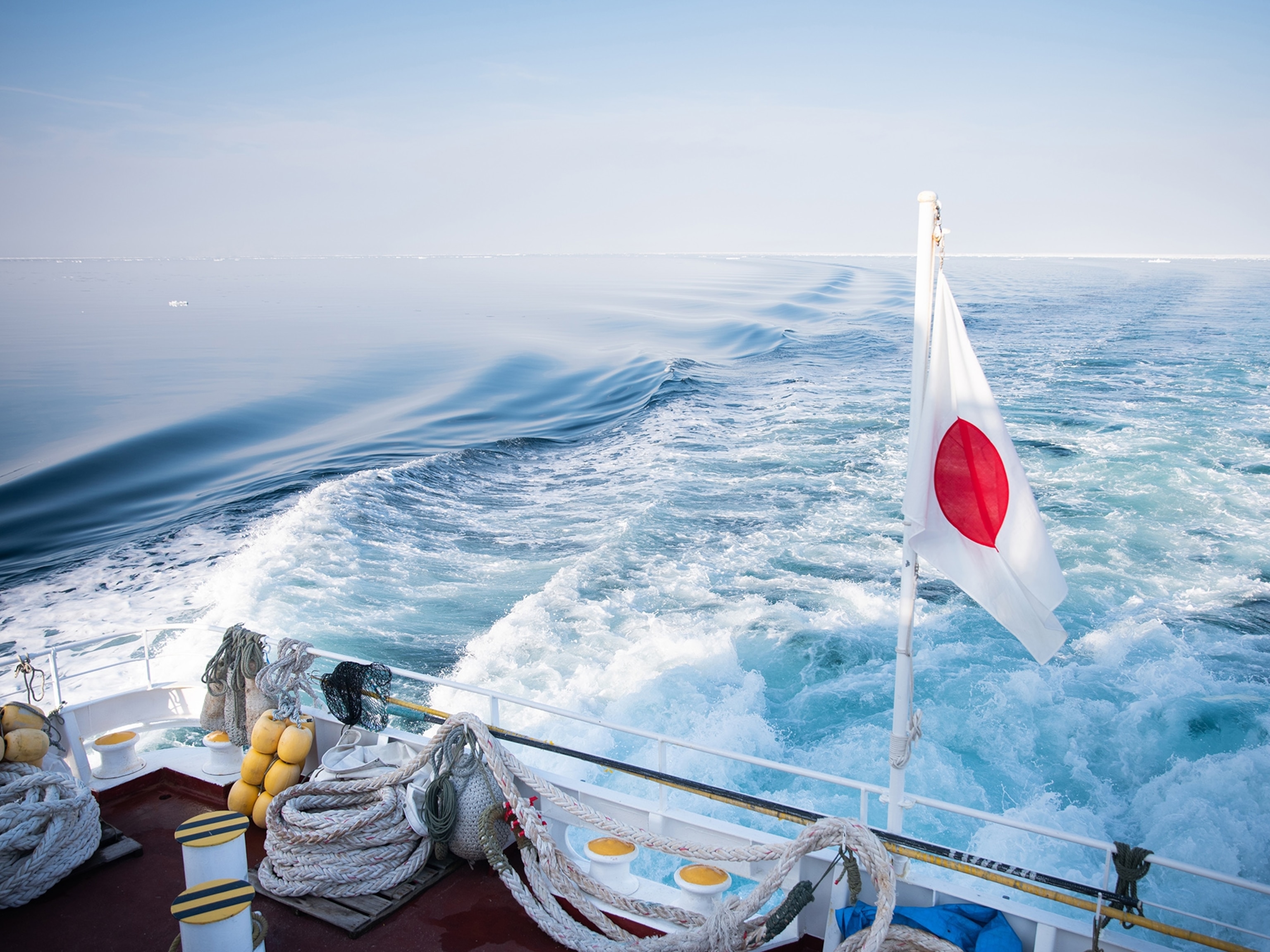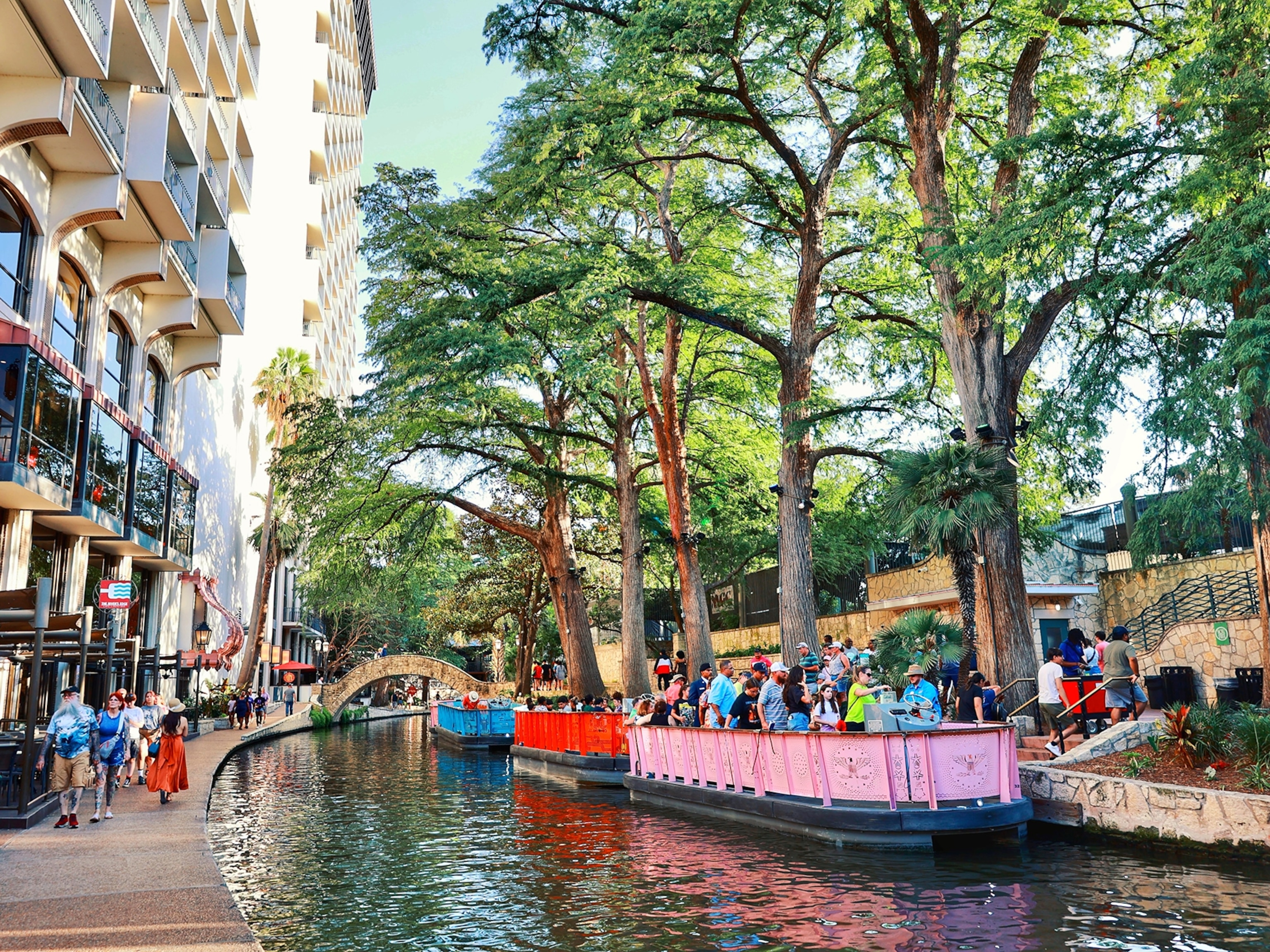
Inside Arizona: Expert Advice on What to Do and See
The sky’s the limit in a state graced with elemental energy, creative spark, and small-town flair.
Whitewashed churches, red rock canyons, and pink-blossom cacti. “Green stick” palo verde trees, Navajo turquoise, and swell-egant resorts. Discoveries crop up everywhere in the 48th state.
A deep cultural heritage—Mexican to Anglo, Hopi to hipster—flavors Arizona’s communities. Cities shimmer with possibilities, from bike tours and art walks to street fairs, fiestas, and rodeos. Wilderness lies so close, you can go from skyscraper to saguaro in zero to 60. There are canyons (this is the Grand Canyon State after all), deserts, mesas—and a startling number of lakes, creeks, and swimming holes that invite all sorts of water fun.
Arizona teems with treasures. Begin your journey in what locals consider the eighth wonder of the world: the vast sandstone basin of Monument Valley.
Monument Valley Navajo Tribal Park

“So this is where God put the West,” John Wayne reportedly said when he arrived in Monument Valley to film Stagecoach. The 1939 Western—the first of dozens of movies shot here—elevated Wayne to star status and established Monument Valley as a cinematic symbol of the Old West.
The silver screen version of this canyon land’s sandstone buttes, mesas, and arches pales in comparison to the grandeur of the real thing. Straddling the Arizona-Utah border, 91,696-acre Monument Valley Navajo Tribal Park is a sacred place to the Diné, the Navajo term for the Navajo people.
“Our elders say the valley is like a sitting hogan,” says Rosalyn Crank, referring to the traditional Navajo mud-and-wood dwelling. Crank grew up in Monument Valley and hosts guests nearby, at her Mother Earth Hogan Airbnb. “The walls in the valley sort of echo the walls of the hogan, and in the center is the hub … like the stove in the center of a hogan.” Some also have considered the two iconic notched buttes known as the Mittens to be the hands of a deity.
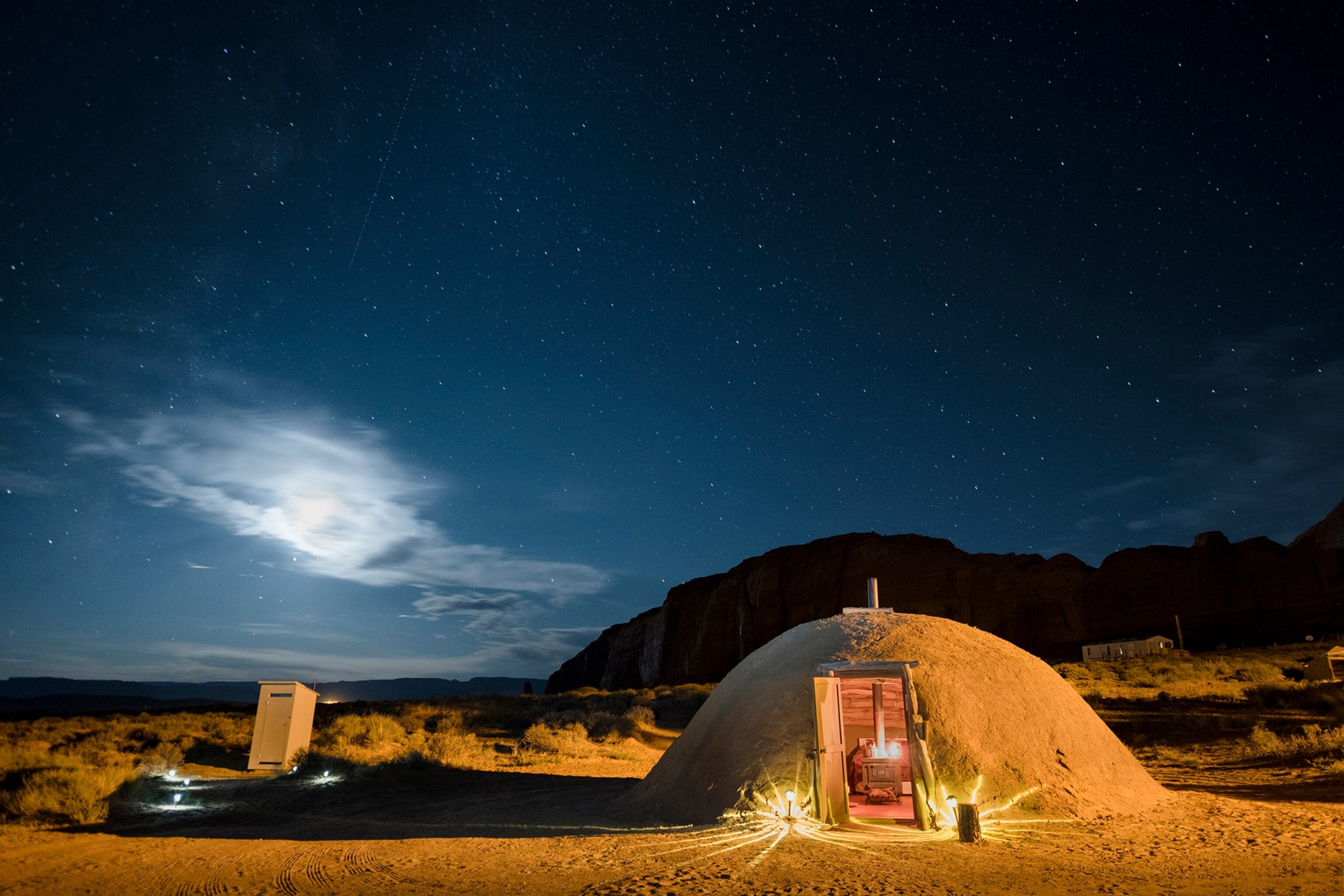
Venturing to the center of the tribal park, or anywhere off the main 17-mile loop road, requires a Navajo guide like Ray Begay.
“My grandma and my mom always tell us if you are up early dawn and out here, you will get good things in return,” Begay says, gazing over the valley. “At times when I guide, there is a medicine man who sings morning prayer. It’s a beautiful song.”
Insider tip: Experience this sacred place that the Navajo call Tse’Bii’Ndzisgaii, or “valley of the rocks,” on an overnight trip to Hunts Mesa, where you’ll be treated to a better-than-silver-screen sunset before camping out under the stars. Monument Valley may be one of the most photographed locations in the world, but it remains steeped in American history and lore.
Festivals, Foods, and Flights of Fancy
Hopi Native Arts and Cultural Festival
September’s annual Hopi Native Arts & Cultural Festival offers a window into the traditions of a people who guard their privacy and serve as “protectors of Mother Earth.” Held in Flagstaff’s Heritage Square, the festival connects Hopi artists—basket weavers, potters—with the outside world and with Hopi families. “The festival helps inspire our younger ones,” says event coordinator Lisa Talayumptewa, “and keeps us stronger as a tribe.”
Barrio Viejo, Tucson
The Barrio Viejo, or “old quarter,” is the traditional heart of Tucson’s Mexican-American community. Its 250 adobe and territorial-style buildings, some from the 1850s, are “quintessentially and distinctly Tucson,” says local preservationist Demion Clinco. Cruise its streets with Tucson Bike Tours, then lunch at 5 Points Market and Restaurant, purveyor of farm-to-table foods. Bunk at the Downtown Clifton, a period motel that stocks 1950s pulp fiction and rentable record players.
Horseshoe Bend Slot Canyon
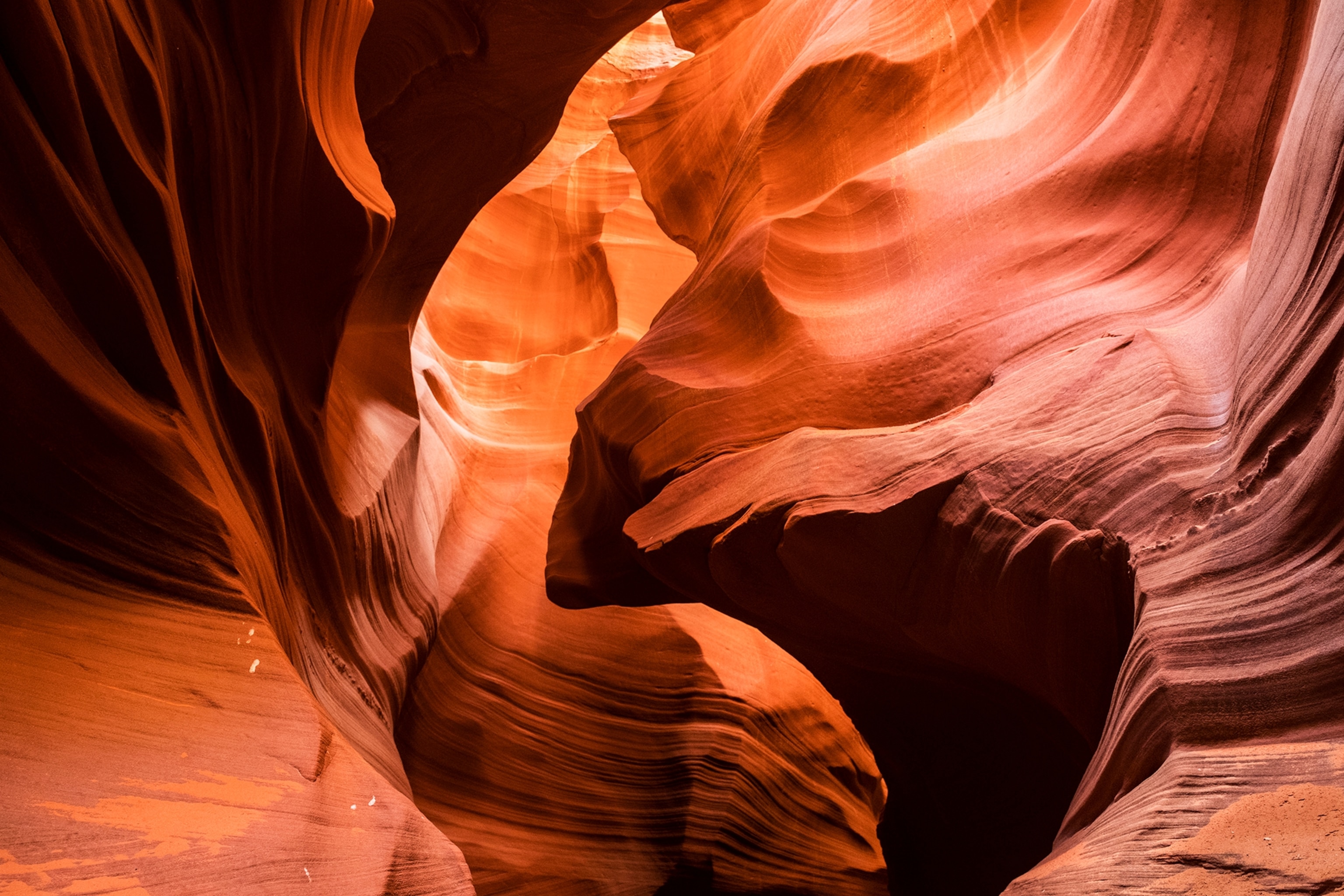
Northern Arizona’s slot canyons are the stuff of photographers’ dreams: wavelike sandstone passages, swirls of color, ethereal beams of light. Antelope Canyon, near the town of Page, gets the buzz, but you’ll be as wowed by nearby Horseshoe Bend Canyon, also known as Secret Canyon. Only Navajo-owned Horseshoe Bend Slot Canyon Tours is allowed to lead small groups through the 450-foot-long formation, which tour manager Tim Bryan calls “one of the most magical, surreal, and simply beautiful places on Earth.”
Yuma Territorial Prison State Park
Desperadoes and other outlaws did time at Yuma Territorial Prison from 1876 to 1909. The bluff-top jail was considered “a bit of a country club,” says Arizona State Historian Marshall Trimble, noting that prisoners were well fed and could learn a trade. However, “visitors get a real sense of the loneliness in the cells” as they walk an original cell block. And, unlike stagecoach bandit Pearl Hart and her fellow inmates, visitors can leave at will, no escape plan needed.
Ajo
Drive south of Gila Bend toward Mexico on Highway 85, and several clues suggest that the approaching town of Ajo is far from typical. At mile marker 29, cell signals begin to fade. By marker 35, wildlife is abundant enough that drivers are cautioned with a WATCH FOR ANIMALS sign. Ajo, surrounded by 12 million acres of federal lands (including the nearby Organ Pipe Cactus National Monument), is no stranger to coyotes, javelinas—and travelers intrigued by its possibilities. As you pull into this Sonoran Desert community, your phone revives, but you’ll be too curious about the town’s revival to pay attention to it.
Ajo (pronounced Ah-ho) saw its population crater after the 1985 closure of its chief industry, copper mining. Left behind was a stunning array of Spanish revival buildings, including the Curley School, now a classrooms-to-guest-rooms haven for artists and other creative souls. Warning: Seduction happens fast here.
Boston natives Emily and Stuart Siegel have embraced their new town with the enthusiasm of earlier pioneers. “We’re an eclectic cast of characters,” says Emily, who oversees the Sonoran Desert Inn and Conference Center, housed in the former school. The inn’s 21 rooms frame a courtyard where 26 pomegranate trees flourish—another sign of this desert town’s renaissance.
Ajo is just one of many Arizona enclaves, from 1880s ghost towns to Mad Men–era districts, offering a smile and sense of place. These four communities promise their own experiences.
Towns That Weave Their Own Magic
Jerome
“Welcome to the ‘Mile-High City,’ ” says the receptionist at the Grand Hotel in tiny Jerome. “We just don’t say that to Denver folks.” Perched on Cleopatra Hill, this mining town between Prescott and Flagstaff was flush with copper-ore revenue until the mine closed in 1953. Saved by 1960s hippies, Jerome’s Western-style buildings house restaurants, big on altitude with no attitude.
Paradise Gardens, Phoenix
“Phoenix’s buildings are off the hook,” says Alison King of Modern Phoenix, a group preserving mid-century architecture in Arizona’s capital. Case in point: Paradise Gardens, a 1960s quarter celebrated for that era’s clean-lined style. Attributed to architect Al Beadle, the residences’ designs were inspired by native plants. For more, take King’s tour.
Bisbee
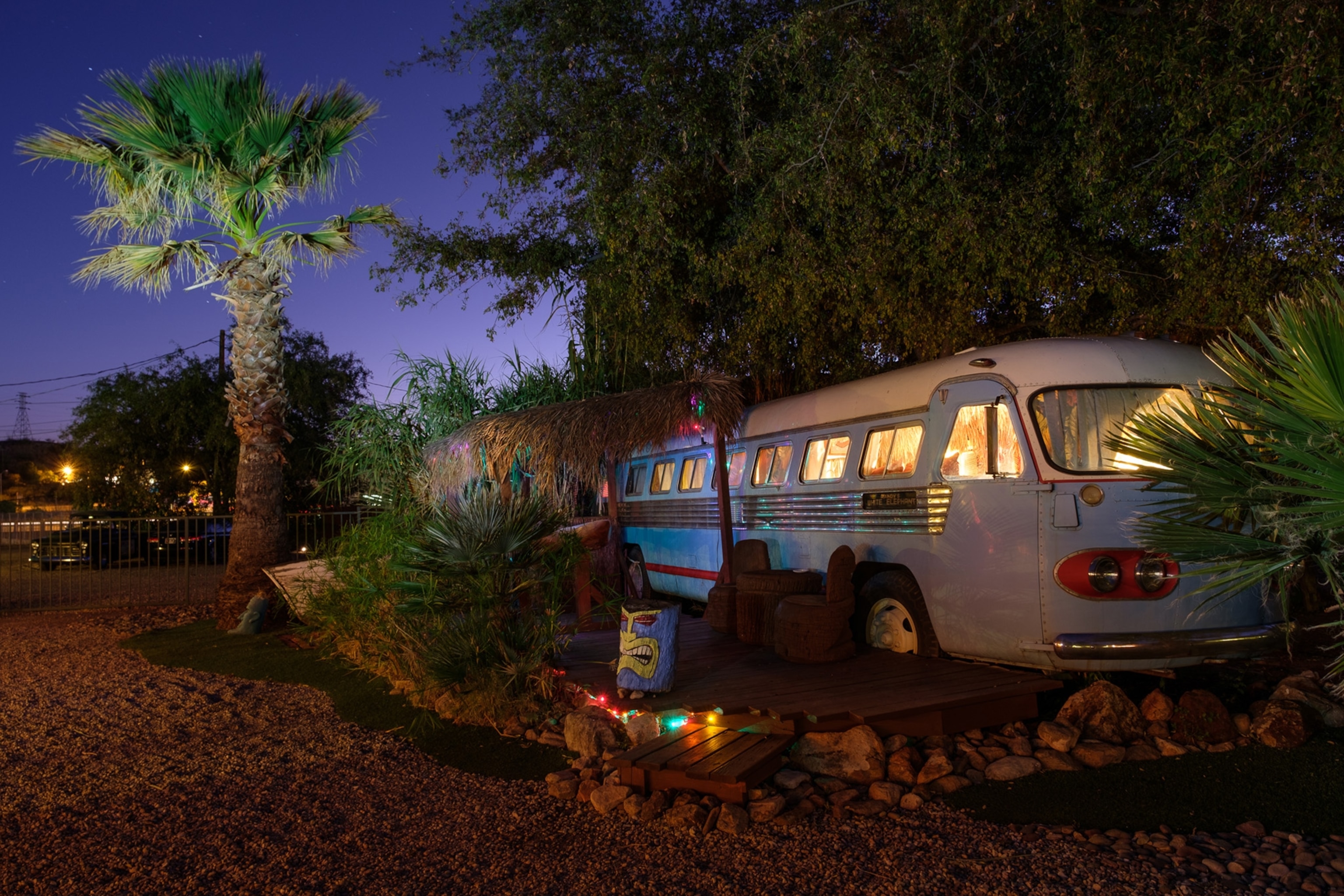
“Bisbee is a magnet for eccentrics,” says photographer Zoya Greene of this town’s mix of healers, hippies, performers, and artisans. Unleash your inner creative at a Bisbee Craft School workshop, then spot zany sculptures and “art cars” along the staircases of the Bisbee 1000 Great Stair Climb. Cap things off with a night in a 1947 yacht, one of 10 “rooms” at The Shady Dell vintage trailer court.
Williams
Before interstates, the town of Williams was a stopover on Route 66. Williams’s stretch of the 2,448-mile “Mother Road” hit its neon-lit prime in the 1950s and ’60s. When I-40 bypassed town in 1984, locals rallied to preserve their Route 66 heritage, centered on the historic downtown district. Says Mayor John Moore, “Williams harks back to a simpler time.” Today, get your kicks on this Route 66 at Twisters, a 1926 Texaco station turned diner.
Verde River
River guide Melissa Edwards keeps her armada of 14 kayakers moving; she knows it’s easy to be distracted by the natural splendor of the Verde River and lower your paddle. The reeds and wild grapevines on its banks are a luscious green. Where the water narrows, the arcing cottonwoods and alder trees offer cool shade. Songbirds flit in the dappled sunlight.
Edwards has navigated the Verde for nine years and would never trade in her paddle, not even for a Scottsdale swizzle stick. “Keep your city,” she says with a laugh as she noses her kayak into the current. “This is beautiful.”
- National Geographic Expeditions
It’s hard to believe that this wild-water world is in Arizona, but the Verde River, which courses for 125 free-flowing miles, is just one of the eye-openers for visitors who equate the state with the Sonoran Desert.
From tubing to lake sailing (there is an Arizona Yacht Club), to jumping into your pick of swimming holes, Arizona has a raft of choices for cooling off. Another option? The rinse of a glass, the rattle of ice, and the fashioning of a canyon-red craft cocktail at Counter Intuitive, an artful bar in Old Town Scottsdale. “We push the envelope for cocktails,” says co-owner Jason Asher, who often uses Arizona ingredients in his recipes. An old-fashioned features Tucson-made Whiskey Del Bac. Plunge into more of Arizona’s waters in these four desert dives (opposite).
Wild Western Wet Lands
Watson Lake

Mother Nature brought the rocks, Granite Creek’s dam added the water. The result: Watson Lake, a liquid interval in the Granite Dells outside Prescott. Built in the early 1900s for irrigation, the man-made reservoir is popular for recreation (excluding swimming). From spring into fall Prescott Outdoors rents kayaks, canoes, and stand-up paddleboards to explore the lake’s secluded coves and to cruise along
the scenic bouldered shoreline.
The “Crack” on Wet Beaver Creek
Blowing up your Instagram is only half the fun of dipping into the “Crack” on Wet Beaver Creek. The cheekily named swimming hole sits in the 160,000-acre Red Rock Ranger District, south of Sedona. Reaching the Crack means hiking some seven miles (round-trip) on Bell Trail No. 13. The rewards—from cliff jumping into deep water to sunning on rock slabs to giving your friends a severe case of FOMO—are well worth the trek.
Emerald Cave

True to its name, Emerald Cave is a jewel along the Black Canyon National Water Trail, a 30-mile route in the Lake Mead National Recreation Area. To see Emerald Cave’s trademark green glow, visit early to mid-afternoon in spring or fall. “Inside the cave on a windless afternoon, with the water absolutely still and the light streaming through the entrance, it’s dreamlike,” says Kayak Lake Mead owner Robert Finlay, who leads custom Black Canyon paddling trips.
Ritz-Carlton Dove Mountain
It’s no mirage. That is an oasis in the Sonoran Desert just north of Tucson. The 850-acre Ritz-Carlton Dove Mountain resort gins up a watery trifecta: a splash-and-play main pool, a sip-and-chill infinity pool, and a serenity pool complete with tanning island. Plunge into the main pool on a 235-foot-long waterslide, designed to blend in with the desert as it snakes around boulders and cacti. At sunset, slide into the infinity pool and sip a margarita from the poolside Turquesa Latin Grill as the sky blushes into pinks and crimsons.
Award-winning writer Andrew Nelson is a Traveler veteran. The journeys of photographer and former Traveler director of photography Daniel R. Westergren have spanned the globe.




